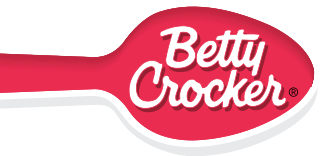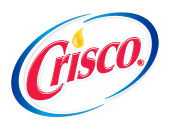
General Mills, Inc., is an American multinational manufacturer and marketer of branded consumer foods sold through retail stores. It is headquartered in Golden Valley, Minnesota, a suburb of Minneapolis. The company markets many well-known North American brands, including Gold Medal flour, Annie's Homegrown, Lärabar, Betty Crocker, Yoplait, Colombo, Totino's, Pillsbury, Old El Paso, Häagen-Dazs, Cheerios, Trix, Cocoa Puffs, and Lucky Charms.

Betty Crocker is a brand and fictional character used in advertising campaigns for food and recipes. The character was originally created by the Washburn-Crosby Company in 1921 following a contest in the Saturday Evening Post. In 1954, General Mills, an American Fortune 500 corporation, branded the red spoon logo, giving various food-related merchandise the Betty Seal of Approval. A portrait of Betty Crocker, first commissioned in 1936 and revised several times since, appears on printed advertisements and product packaging. On television and radio broadcasts, Betty Crocker was portrayed by several actresses, on radio by Marjorie Husted for twenty years, and on television by Adelaide Hawley Cumming between 1949 and 1964.

The J. M. Smucker Company, also known as Smucker and Smucker's, is an American manufacturer of jam, peanut butter, jelly, fruit syrups, beverages, shortening, ice cream toppings, and other food products in North America. Smucker's headquarters are located in Orrville, Ohio. It was founded in 1897.

Häagen-Dazs is an American ice cream brand, established by Reuben and Rose Mattus in The Bronx, New York, in 1960. Starting with only three flavors: vanilla, chocolate, and coffee, the company opened its first retail store in Brooklyn, New York, on November 15, 1976. The company operates worldwide and also produces ice cream bars, ice cream cakes, sorbet, frozen yogurt, and gelato.

Arm & Hammer is a brand of baking soda-based consumer products marketed by Church & Dwight, a major American manufacturer of household products. The logo of the brand depicts the ancient symbol of a muscular arm holding a hammer inside a red circle with the brand name and slogan. Originally associated solely with baking soda and washing soda, the company began to expand the brand to other products in the 1970s by using baking soda as a deodorizing ingredient. The new products included toothpaste, laundry detergent, underarm deodorant, and cat litter.
Foreign branding is an advertising and marketing term describing the use of foreign or foreign-sounding brand names for companies, products, and services to imply they are of foreign origin. This can also be used for foreign products if the country of origin may not be beneficial. In this case, companies tend to use a foreign branding strategy, trying to make customers believe that the company and/or its products originate from a more favourable country than they actually do.
Martha White is an American brand of flour, cornmeal, cornbread mixes, cake mixes, muffin mixes, and similar products.

Crisco is an American brand of shortening that is produced by B&G Foods. Introduced in June 1911 by Procter & Gamble, it was the first shortening to be made entirely of vegetable oil (cottonseed). Additional products marketed under the Crisco brand include a cooking spray, various olive oils, and other cooking oils, including canola, corn, peanut, sunflower, and blended oils.

Godfather's Pizza is a privately owned restaurant chain headquartered in Omaha, Nebraska, that operates fast casual Italian franchises and Pizza Express locations.

Totino's and Jeno's are brands of frozen pizza products owned by General Mills.
Frusen Glädjé was a company that made premium ice cream for the American market, founded in 1980 by Richard E. Smith. Although the ice cream was made in the U.S., it used a quasi-Swedish name: frusen glädje, without the acute accent, is Swedish for "frozen happiness".

Pizza snack rolls are a frozen food product consisting of bite-sized breaded pizza pockets with an interior of tomato sauce, melted cheese and various pizza toppings. They are sold in a variety of flavors including cheese, pepperoni, sausage, supreme, multiple cheeses, and mixed meats. Other flavors included hamburger, cheeseburger, ham and cheese, and combination. Pizza snack rolls are designed to be quickly cooked in the oven or microwave. The name "pizza rolls" is a trademark of General Mills, current owner of the original product.
Reuben and Rose Mattus were Polish-Jewish entrepreneurs who founded the Häagen-Dazs ice cream business in the United States.

The study of the history of marketing, as a discipline, is meaningful because it helps to define the baselines upon which change can be recognised and understand how the discipline evolves in response to those changes. The practice of marketing has been known for millennia, but the term "marketing" used to describe commercial activities buying and selling a products or services came into popular use in the late nineteenth century. The study of the history of marketing as an academic field emerged in the early twentieth century.

Pet, Inc. was an American company that was the first to commercially produce evaporated milk as a shelf-stable consumer product and later became a multi-brand food products conglomerate.

Paul Steven Walsh is an English businessman who is the executive chairman of the McLaren Group. He was the chief executive of Diageo, the world's largest whisky company, for twelve years between 2000 and 2013.

Brynwood Partners is an American private equity investment firm focused on leveraged buyout and other control investments.

A baking mix is a mixed formulation of ingredients used for the cooking of baked goods. Baking mixes may be commercially manufactured or homemade. Baking mixes that cater to particular dietary needs, such as gluten-free baking mixes or kosher baking mixes, can be bought in many places.

Funny Face was a brand of powdered drink mix originally made and publicly sold by the Pillsbury Company from 1964 to 1994. and in limited productions from 1994 to 2001. The brand was introduced as competition to the similar Kool-Aid made by Kraft Foods. The product came in assorted flavors sweetened with artificial sweetener, and was mixed with water to make a beverage.
Mark Timothy Smucker has been the president and CEO of The J.M. Smucker Company since May 2016. He is the fifth-generation member of the Smucker family to lead the business, a now publicly traded Fortune 500 company encompassing coffee, packaged food, and pet food, headquartered in Orrville, Ohio.






















